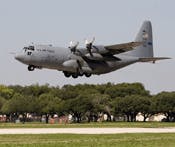The Environmental Protection Agency (EPA) is recognizing six winners of the 2007 Water Efficiency Leader (WEL) awards for their efforts in reducing, reusing and recycling water. A panel of national water experts chose the winners based on three criteria: leadership, innovation and water saved.
The WEL Awards help foster a nationwide ethic of water efficiency, which is critical to the growing U.S. economy and quality of life. Due to demographic shifts, increased demand and aging water infrastructure, there is a national need for more efficient use of our water resources. The EPA recognizes this need and has developed the WEL Awards—in addition to other initiatives, such as a product labeling—under the WaterSense program and a national organization to foster water efficiency.
Winners of the 2007 WEL Awards are:
• Intel Corp.’s Ocotillo Campus, Chandler, Ariz.: This company's three initiatives focus on the collective recycling of 75% of the water used during manufacturing, thereby reducing their net demand for city water; the take-back of 825 million gal of treated wastewater from the city’s wastewater plant; the internal re-use of 530 million gal of water; and treatment of 575 million gal of water to drinking water standards that is then returned to the local underwater aquifer.
• Santa Clara Valley Water District, San Jose, Calif.: This water management agency helped the community reduce water demand by 55,000 acre-ft, or 12% of present demand, through conservation and water recycling, with plans to further reduce demand for water.
• Frito-Lay, Plano, Texas: Frito-Lay's efforts at its 33 facilities resulted in the 39% reduction of water consumption per pound of product since 1999.
• Lackland Air Force Base (pictured), Lackland, Texas: This military base uses comprehensive water conservation measures and purchases recycled wastewater for reuse on the base.
• The Kentucky Pollution Prevention Center (KPPC) at the University of Louisville, Louisville, Ky.: The center finds profitable pollution prevention solutions for the metal industry to reduce the need for, and cost associated with, end-of-pipe controls. One example includes KPPC's assistance, which resulted in a 30% net water savings, valued at $50,000 annually, while production at the metal finishing plant increased 50%.
• Allan Dietemann, Seattle Public Utilities, Seattle: Dietemann has promoted water conservation for 20 years, resulting in reduced water consumption for businesses, government and homeowners.
Source: U.S. Environmental Protection Agency


